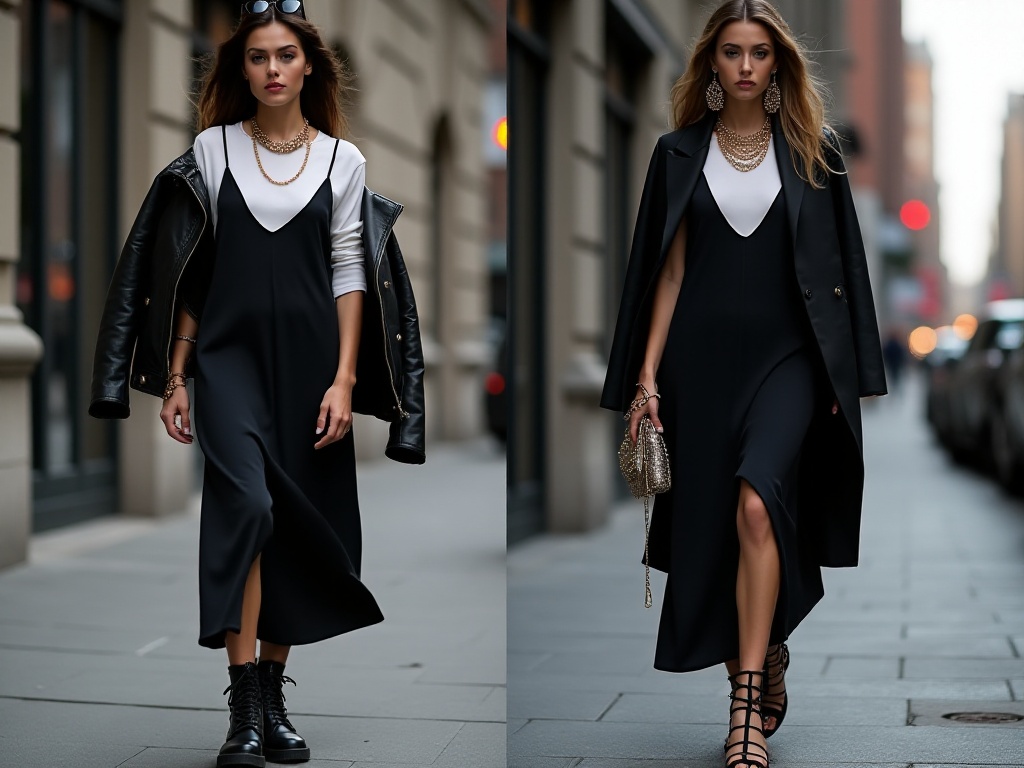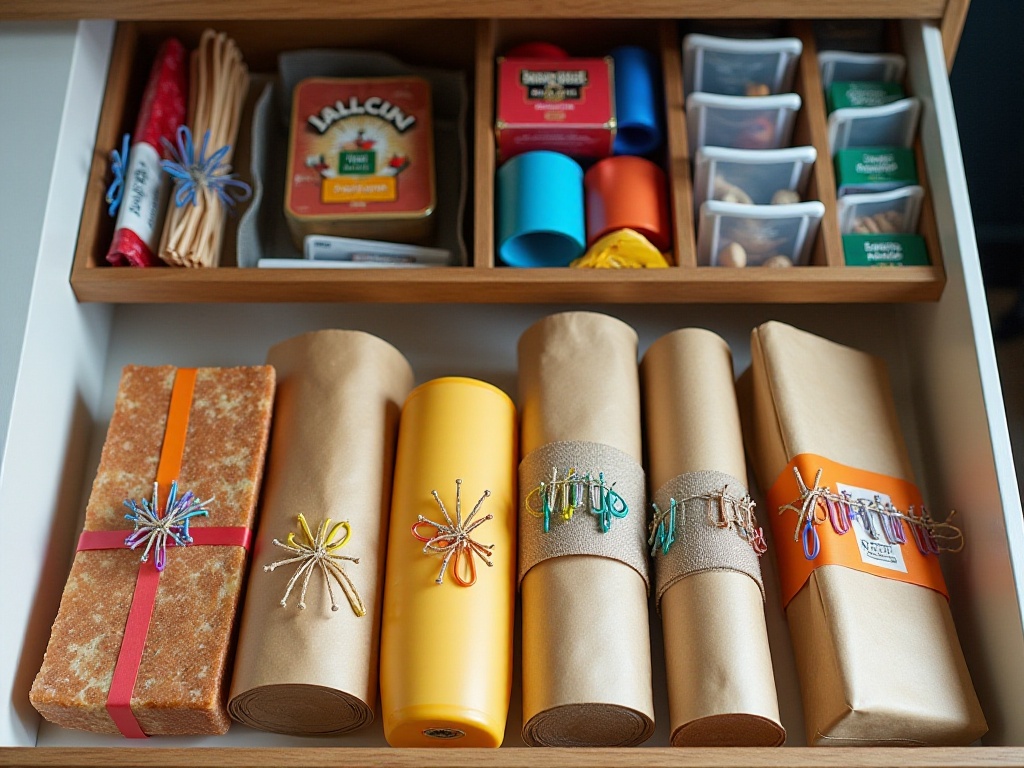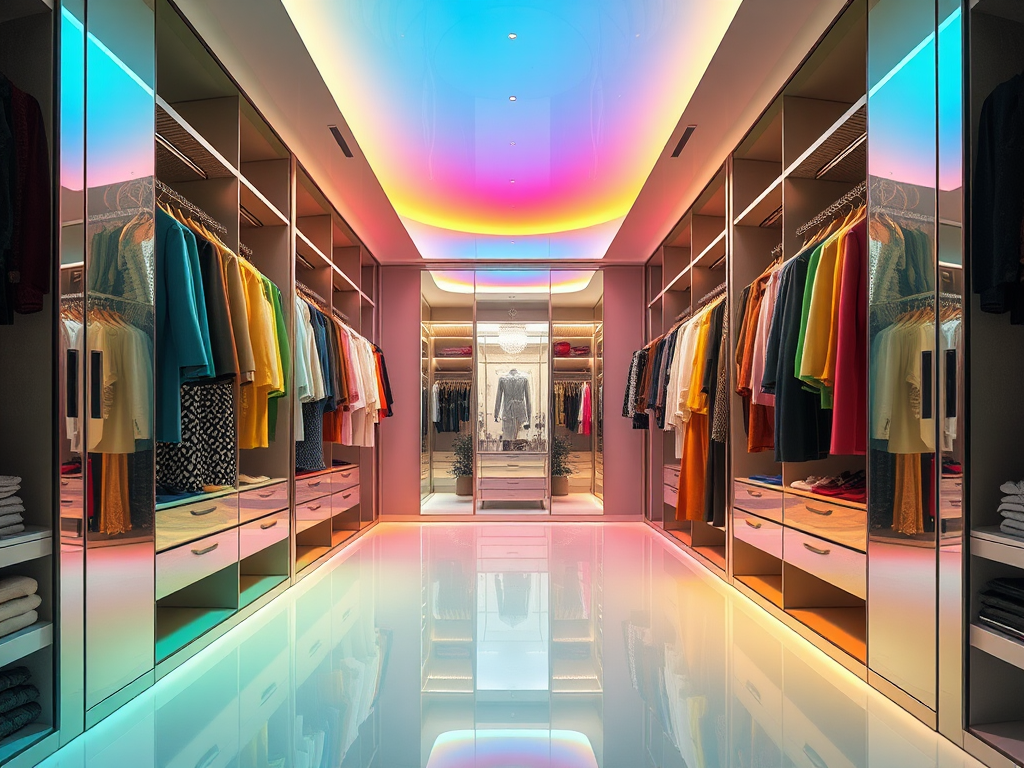Introduction
Hello everyone! Today I want to talk about personal styling. As a fashion blogger who started as a complete novice, I deeply understand the various confusions encountered on this journey of exploration. Do you often face decision paralysis when opening your closet in the morning? Or feel like you've bought lots of clothes but can never achieve the desired look? Don't worry - today I'll share a complete styling approach to help you build your own style system.
Color Code
When it comes to styling, color matching is both the most basic and important aspect. Did you know that choosing the right colors can instantly elevate your presence by several levels? When I first started studying fashion, I knew nothing about color coordination and often dressed like a colorful palette. Looking back now, it's quite embarrassing.
Let's first discuss the relationship between skin tone and clothing colors. Based on my years of observation and practice, warm-toned individuals particularly suit earth tones like olive green and warm orange. Take myself for example - I have a warm tone, and these colors always make me look radiant. For cool-toned individuals, blue and purple series are definitely your bonus points.
For specific color matching techniques, I suggest starting with monochromatic combinations. For instance, try matching different shades of the same color - this approach is both safe and stylish. My favorite is the beige gradient combination: from a light beige knit top to camel wide-leg pants, paired with dark brown boots, creating a very harmonious overall look.
For beginners, the three versatile colors - black, white, and gray - are absolute essentials. They're like universal formulas in the styling world - you can't go wrong with any combination. I always keep several pure white T-shirts and shirts in my closet. Paired with black pants or skirts and a gray jacket, it's perfect for lazy days.
If you want to try more color combinations, start with adjacent colors. For example, yellow with orange, or blue with green are easy to handle. I've recently been loving the combination of mint green and sky blue - it's fresh and gentle. Of course, if you're bold, you can try contrasting colors like purple with yellow, or blue with orange. As long as you control the proportions, you can still achieve a fashionable look.
Color matching should also consider seasonality. Spring and summer seasons can incorporate brighter colors like pink, yellow, and mint green - colors full of vitality. Fall and winter seasons can opt for deeper colors like burgundy, forest green, and navy blue. However, this isn't absolute - the key is what atmosphere you want to create.

Layering
I remember when I first started studying fashion, I always felt others had great layering while I looked like I was wearing pajamas. Later I discovered the key lies in layering techniques. A single piece might look monotonous, but through clever layering, the overall look becomes rich.
The most basic layering starts with inner wear plus outerwear combinations. For example, a basic T-shirt paired with a knit cardigan and a jacket instantly creates rich layers. Note that inner wear should be fitted, so layering won't look bulky.
Long and short combinations are also great for creating layers. For example, short tops with long coats, or long tops with short jackets can create visual layers. My favorite is pairing a short jacket with a long shirt and straight-leg jeans - it has layers without being too complex.
Besides length variations, fabric textures can create layers. Different fabric textures give different visual impressions, like silk's smoothness, wool's roughness, and knit's softness. I often pair a silk shirt with a wool coat, creating both texture contrast and enriching the overall look.
Color depth variations can also create layers. Generally, gradients from light to dark or dark to light look good. For example, light tops with medium coats and dark pants create good layering. However, color transitions should be natural, not too abrupt.
Accessories are great helpers for adding layers. A scarf, hat, or belt can make the overall look more three-dimensional. I particularly love using scarves to add layers in fall and winter - different scarf tying methods create different effects.

Occasion Transitions
In my view, an outfit that can adapt to different occasions is truly valuable. Modern life moves at an increasingly fast pace, often requiring quick transitions between different occasions. It would be too troublesome to change outfits for every occasion. Therefore, mastering occasion transition techniques is particularly important.
For example, a little black dress with flats and a denim jacket makes for a casual daily look; switch to heels and add some jewelry, and you're ready for formal occasions. This versatile styling method saves both money and effort. The key is choosing versatile pieces and changing the overall style through different combinations.
Work outfits should focus on propriety and professionalism. A basic suit set is essential, but don't think work clothes must be dull. You can add personal flair through inner wear and accessories. For instance, pair a suit with a printed shirt or colorful knit - maintaining professionalism without being too rigid.
Date outfits can be more romantic. Dresses are a good choice, but consider the occasion and season. Summer calls for flowing floral dresses, while winter suits knit dresses with boots. Remember, the most important thing for date outfits is feeling comfortable and at ease.
Weekend casual wear can be more relaxed. Jeans with T-shirts are the most classic casual combination, but pay attention to details. Choosing the right jeans fit is important - I suggest having both straight-leg and relaxed-fit pairs for different occasions. T-shirts are best in solid colors or simple patterns for versatility.
Travel outfits should prioritize comfort and practicality. Choose basic pieces that are easy to mix and match, creating multiple looks with minimal items. For example, a white shirt, jeans, and a jacket can handle most occasions. Remember to choose easy-care fabrics to maintain neatness while traveling.

Sophistication
When it comes to sophistication, many people's first thought is buying expensive items. Actually, it's all about how you style them. An ordinary piece, when styled properly, can look sophisticated. Here are some tips for elevating your look's sophistication.
First is color choice. Sophistication often comes from restraint and coordination. Consider choosing low-saturation colors like beige, gray, and navy. These colors look understated yet sophisticated. Meanwhile, monochromatic combinations easily create sophistication. For instance, an all-beige outfit, with good fabric and style choices, can definitely exude presence.
Next is cut selection. Appropriate cuts can make the overall look more refined. Consider choosing simple cuts without too many complex designs. For example, a structured blazer and well-cut straight pants - these basic styles often create sophistication more easily.
Fabric quality is also important. Even ordinary styles can elevate overall quality with good fabric. Pay attention to fabric feel and drape. For instance, a quality silk shirt naturally gives a sophisticated impression.
Detail handling is equally important. Small details often determine the overall look's class. For example, clothes should be well-ironed, buttons kept clean, shoes polished bright. These details may seem trivial but affect overall impression.
Accessory selection requires taste. Consider choosing simple, elegant accessories, nothing too flashy. For example, pearl earrings or a fine chain necklace - these classic accessories often more easily elevate look sophistication.
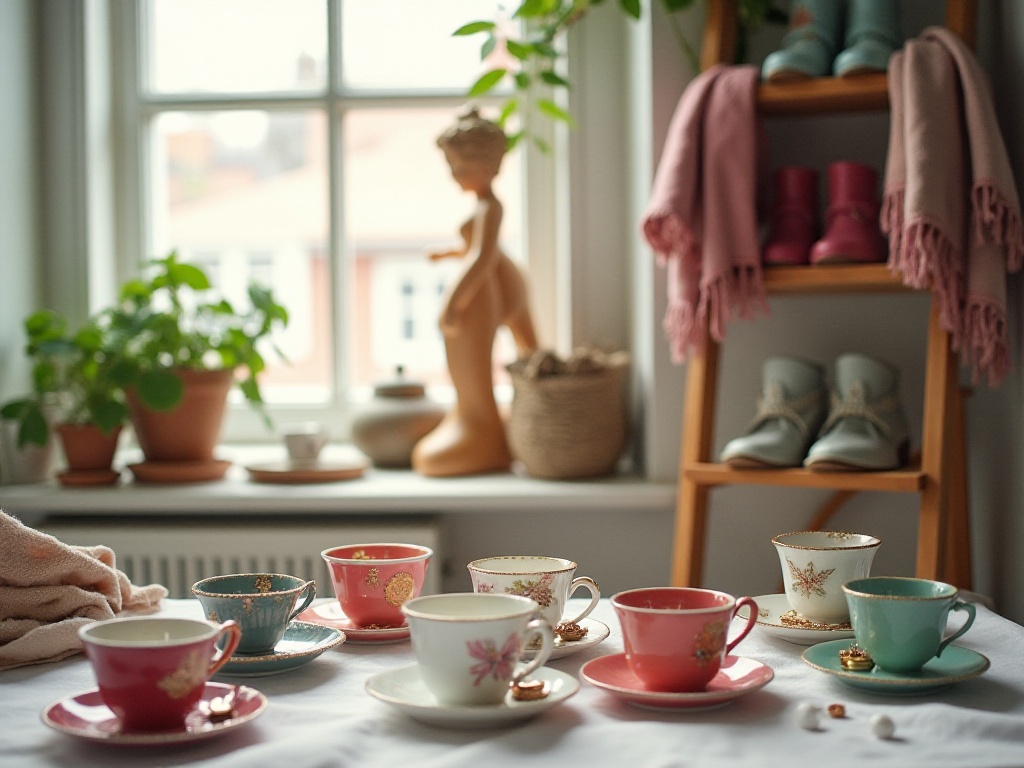
Accessorizing
Accessories are truly magical for elevating looks. A simple outfit can present completely different effects through different accessory combinations. However, note that accessories require moderation - too many or too dramatic accessories can overshadow the main outfit.
First let's discuss earring selection. Earrings are one of the easiest accessories for enhancing looks. For daily styling, consider simple studs or small hoops. For formal occasions, you can choose slightly more dramatic styles, but ensure coordination with the overall look.
Necklace selection is also important. Different necklace lengths suit different necklines. For instance, high necks pair well with long necklaces, V-necks with short necklaces. Also ensure necklace style aligns with clothing style.
Watches aren't just timepieces but great accessories. Consider having a versatile watch, preferably simple style. Metal and leather bands each have their characteristics - choose based on occasion.
Bag selection should consider both practicality and aesthetics. Consider having several different style bags - like a commuter bag, small shoulder bag, casual tote, etc. Choose versatile colors to match more outfits.
Belts serve both practical function and decorative purpose. A good belt can complete an overall look. Consider having several different style belts, both formal and casual, to suit different occasions.
Scarves are essential fall/winter accessories. Different scarf-tying methods create different effects. Learn some basic scarf-tying methods to enrich your looks. Also ensure scarf material and pattern coordinate with overall look.
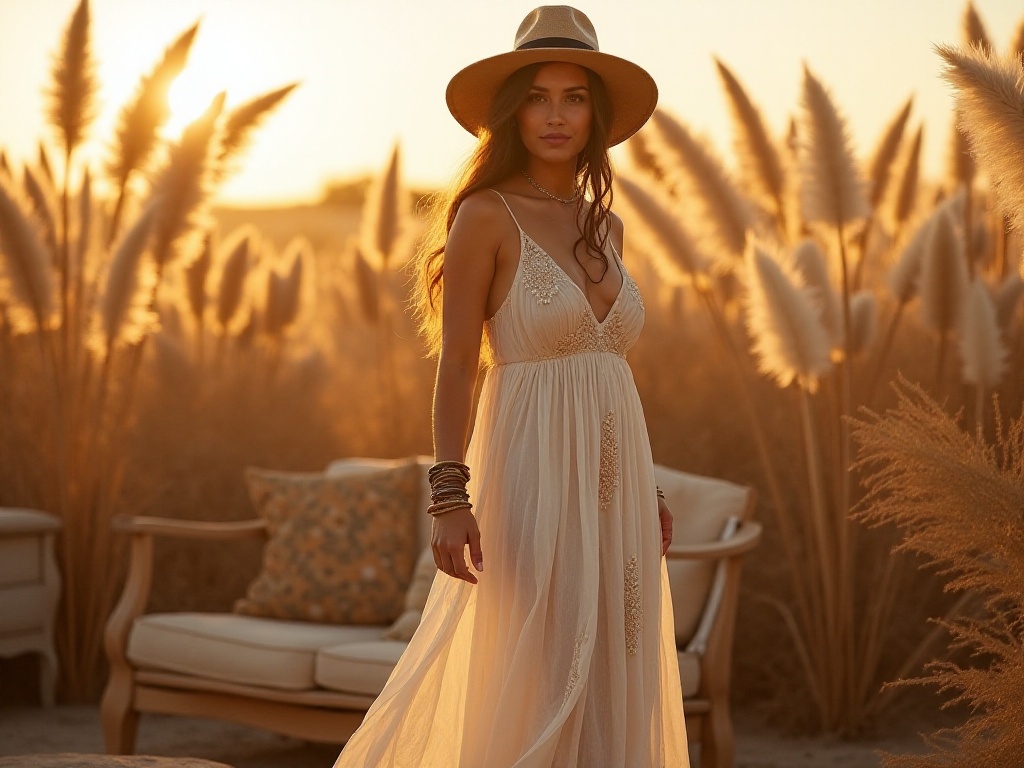
Makeup Coordination
Speaking of overall styling, we must mention makeup. The same clothes paired with different makeup create completely different effects. Makeup and outfit should complement each other for best results.
Daily makeup should focus on natural transparency. Foundation should be smooth but not heavy, eye makeup can be light, just defining eye contours. Choose moisturizing lipstick in natural colors. This makeup pairs well with simple outfits, suitable for work occasions.
For dates or parties, you can do slightly heavier makeup. Try smokey eyes or shimmery eyeshadow, with lipstick in true red or deep rose. This makeup pairs well with sexy or glamorous outfits, easily becoming the focal point.
Makeup focus areas should align with outfit style. For instance, with glamorous clothes, makeup can be lighter. With simple clothes, makeup can add highlights.
Consider seasonality when applying makeup. Summer makeup should be waterproof and sweat-proof - choose lighter products. Winter makeup should focus on moisture - choose more hydrating products.
Hairstyle is also an important part of overall styling. Straight, curly, or up-dos create different styles. Choose suitable hairstyles based on face shape and personal characteristics, ensuring coordination with overall look.
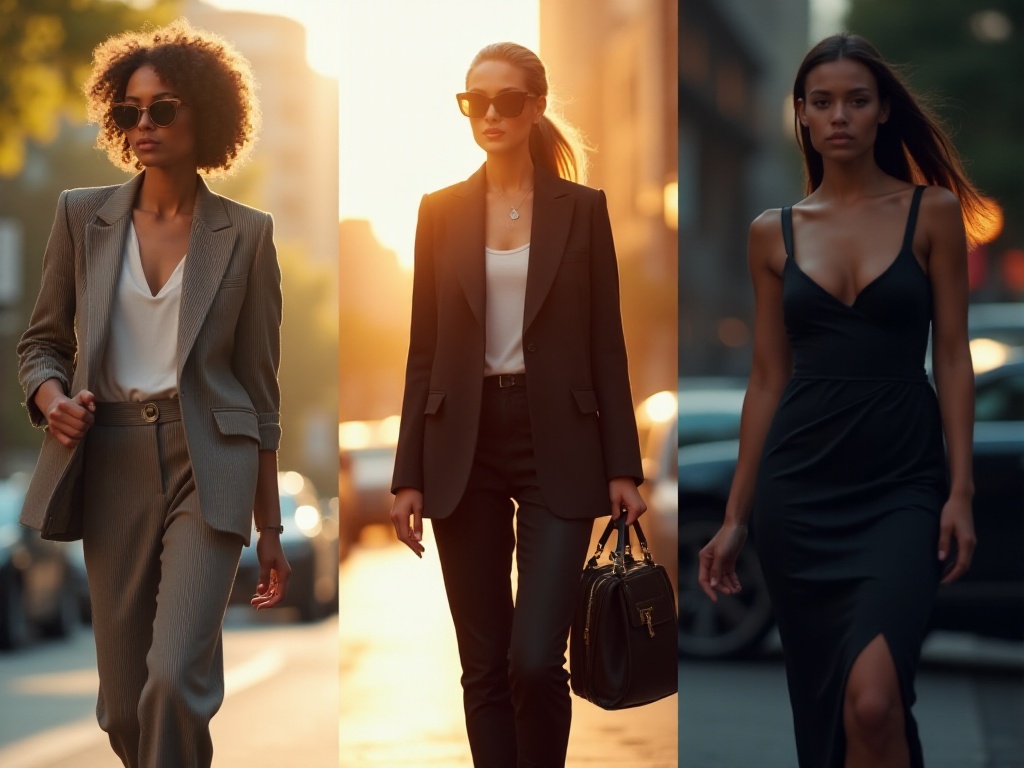
Investment Advice
Through years of exploration, I increasingly feel it's better to invest in a few quality pieces than buy many cheap clothes. Though initially expensive, it's more economical long-term.
First invest in basics. A good white shirt, fitted black trousers, well-cut blazer - these pieces might seem ordinary but are styling foundations. Consider spending more on these basics, choosing quality fabrics and cuts.
Shoes are worth investing in. Good shoes not only elevate overall look but provide comfort. Consider having several pairs for different occasions - formal leather shoes, versatile sneakers, comfortable flats, etc.
Bag selection is important. A good bag can last many years, developing character with use. Choose classic styles that won't easily date. Choose durable materials - leather bags might be expensive but with proper care can last many years.
You can economize on seasonal items. For trendy styles, choose moderately priced brands. These items might only be fashionable for one or two seasons, so don't invest too much.
Choose accessories based on personal budget. If budget allows, invest in quality jewelry. If budget is limited, choose well-designed accessories. Key is choosing versatile styles for maximum utility.
Style Development
Finding your suitable style is really important. I've seen too many people chase trends, buying many unsuitable clothes, resulting in not only wasted money but failing to achieve desired effects. Building personal style needs time and patience, but once you find your suitable style, coordination becomes much easier.
First understand your body characteristics. Everyone has body advantages and disadvantages - key is knowing how to emphasize strengths and minimize weaknesses. For example, if you have long legs, try more leg-showing styles. If your waist is thicker, choose designs that conceal the waist.
Next consider your lifestyle. If work requires frequent travel, prepare more easily matched and maintained clothes. If work environment is formal, prepare more professional wear. Choose clothes based on actual needs to avoid buying unwearable items.
Personal preference is also important. Don't blindly follow trends, choose styles and colors you truly like. Get inspiration from favorite bloggers or celebrities, but adjust based on your situation.
Building personal style is a gradual process. Start with basics, slowly try different styles, find most suitable combinations. Meanwhile maintain an open mind, don't limit yourself to one style.
Recording your outfits is important. Photograph daily outfits to summarize which combinations work well, which need improvement. Through constant trial and summary, find your most suitable style.
Conclusion
Styling can be both simple and complex. Most important is having sufficient self-understanding, then gradually building your style. Everyone is unique - there's no standard answer. Key is finding suitable styling methods for yourself.
Hope this article helps everyone better understand styling and build personal style systems. Remember, styling's ultimate goal is making yourself happy and confident - if you feel comfortable and at ease, that's the best look.
What do you think? Welcome to share your styling insights in comments. Let's continue exploring this fashion journey together, discovering more possibilities.





